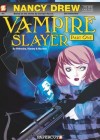 The Plot
The Plot
When Nancy, Bess and George meet the pale and creepy Gregor Coffson one night in the graveyard, they might be excused for wondering if he might be a vampire. Especially when, as time goes on, the evidence continues to mount in favor of that conclusion. But Nancy Drew is not so superstitious as that, and she’s determined to figure out what’s the real secret that Gregor is hiding. In the meantime, Bess, George and Nancy’s increasingly jealous boyfriend Ned attempt to protect Nancy from the dangerous vampire threat.
My Thoughts
Several years ago, when the first Nancy Drew graphic novel arrived, I was quite excited. While the literary value of Nancy Drew has been debated, the books have always been brisk and entertaining no matter what their incarnation. (Though I’ll be upfront: if forced to choose, my preference is for the original originals, the long form versions of 1-34.) Unfortunately, the quality of the first graphic novel was poor and, disappointed, I avoided them after that. But when we discovered there was an apparent relaunch of the graphic novels with the intriguing title of Nancy Drew: Vampire Slayer it was impossible to pass up.
It seemed we were the only ones who felt that way, however, as the volumes proved extremely difficult to acquire through ILL — only one or two libraries in the state would even admit to having a copy, and in the end we weren’t able to borrow volume 2 at all. So I ended up buying them, and in the process discovered that while Vampire Slayer 1+2 provided a “complete” story there was an even more complete story comprised of five total graphic novels: the aforementioned Vampire Slayer 1-2, Hardy Boys relaunch volumes 1-2, and Nancy Drew volume 3, which was a Hardy Boys crossover and promised to tie up all of the plotlines. Immediately, my completist compulsion kicked in and I ended up with all 5 of the volumes.
First impressions were not great: the volumes themselves are disappointingly slender, with most of the money apparently gone to glossy full-color pages when it would be better spent on a longer script with black and white line drawings (because let’s face it, the crowd they’re trying to attract is fans of manga, not American comics). Nancy Drew 1 and 2 were written and illustrated by the same team responsible for the initial line of Nancy Drew graphic novels, a fact which immediately put me on alert.
Nancy Drew: Vampire Slayer opens with Nancy and her friends Bess and George on their way to a movie, all three of them in costume for the ticket discount they’ll get. George, always described as a tomboy, is nicely androgynous and ungirlified (she’s even dressed up as a teen wolf to start with) in contrast with her cousin Bess, who’s always been the girly girl of the bunch. Unfortunately, Bess’s other defining trait — her weight (by no means fat, she’s definitely not supposed to be really slender) — is not conveyed in the drawings well at all, as she appeared to me about the same size as Nancy. But then, the Sho Murase’s art overall was fairly uneven; the characters’ body shapes and faces often elongated or altered depending on the panel.
Our trio soon finds themselves being chased by a vampire, or at least a boy with fangs which are never adequately explained. But then, in a shocking twist, it turns out he’s not actually chasing them but fleeing from Nancy’s dog who we never see or hear of again. The boy’s socially-awkward and odd behavior cause Nancy’s mystery-sense to tingle, and by the time the three of them have finished watching the movie, she’s worked herself up to fever pitch.
Her fever is not relieved when the ‘vampire’ approaches the girls after the movie and introduces himself as Gregor Coffson. His secretive behavior only drives Nancy wild with curiosity and she’s soon devoting all of her time to cultivating him in the hopes he’ll spill the beans. Bess and George and Nancy’s boyfriend Ned, left pretty much completely out of the loop, are thus left to their own devices as they spin ever more ridiculous theories as to what Gregor’s secret might be.
The editing in these two volumes is truly horrid, as evidenced by the fact that no one managed to catch the fact that “Garina” is identified by name several pages before her identity was supposed to be revealed. But even a good editor couldn’t rescue a plot this lame. It reads like something I wrote in the seventh grade.
In contrast to Nancy’s inane outings, where we take two entire volumes to meander through Gregor’s amazing secrets, the two associated Hardy Boys volumes (Crawling with Zombies and Break-up!) are not completely awful. Written by Gerry Conway (famous as the killer of Gwen Stacy) and drawn by Paulo Henrique, the main weaknesses here seem to result from a lack of pages: more space would have given more time to develop character motivations which must necessarily remain very shallow. I again think the series would benefit from a more manga-esque treatment, meaning a longer B&W book instead of a short color one.
Each of the Hardy Boys volumes contains a complete adventure tied together with several underlying plot threads — the shady person or persons behind both schemes, and the growing frustration with one another that’s causing the unravelling of Joe and Frank Hardy’s relationship. Though the plots are simple, I found them better executed, and the artwork was far more consistent (and thus less distracting). Henrique’s artwork appeared to me heavily influenced by a combination of shonen manga and video games. There were several panels I felt might have come straight out of Dragonball Z or Double Dragon. My only complaint was a very weird continuity error introduced by the artwork in the volume Break-Up: Joe and Frank are knocked out and captured wearing one outfit and then when they next appear, they’re wearing something completely different. Are we supposed to believe that the kidnapper took the time to remove their clothing and redress them like a pair of Ken-dolls? If we are, that opens up a whole new can of creepy worms that’s not actually addressed anywhere by the script.
Naturally, the Hardy Boys soon discover that the only clue as to the criminal mastermind behind the rash of Bayport happenings is a phone number in River Heights. Coincidentally the home of Nancy Drew. So the boys head off to meet up with her in Nancy Drew Together With the Hardy Boys. This volume is pegged as Nancy Drew: The New Case Files #3, though I have to wonder if it’s also serving in that capacity for the Hardy Boys series. It’s not clear. The script for this volume was penned not by the Nancy Drew regulars, but by Gerry Conway, which gives it a tone far more in keeping with the Hardy Boys books than the Nancy Drews. Unfortunately, Conway is saddled with the ludicrous plot introduced in the two Vampire Slayer volumes, so after some random happenings in River Heights, everyone heads off to Romania — because, of course, Ned has fled the country in the wake of his supposed ‘breakup’ with Nancy and is now in need of rescue.
In the end, my biggest disappointment with the “New Case Files” series was perhaps the discovery that it wasn’t really new at all: even though the books are starting again at #1, they’re actually a direct continuation of the initial graphic novel lines and frequently reference previously established graphic novel canon. It’s not clear to me why the decision was made to return to #1; perhaps there was just a hope that more people will buy something labelled #1 as opposed to #21. Because this is the case, the “New Case Files” have all the same weaknesses and flaws that were inherent in the graphic novels before – no efforts have been made to improve the product – so they’re just as lousy.
It’s unfortunate, because there was a real opportunity here to reboot Nancy into the 21st century. Giving George and Bess some real skills to make them helpful to Nancy was also wise. But like the “Nancy Drew Case Files” series from the 80s, there were some missteps. For instance, in Nancy Drew Together With the Hardy Boys, Nancy loses her temper with the sniping Frank and Joe and tries to remind them how good they are together as a pair. But really, she is angsting about her breakup with Ned, and concludes by equating “Nancy and Ned” with “Frank and Joe”. Which is just patently ridiculous. Ned is and always has been a sidekick – not even the most important one – and nothing more. Mysteries come first with her, not him.
In Short
The Nancy Drew graphic novel series continues to disappoint with the latest installments, which have been labelled as “New Case Files” and marketed as #1 and #2 of a series. But actually they’re just a direct continuation of the previous graphic novel line, which favors gloss and show over actually taking the time and effort to tell a coherent and reasonable story. Take a pass and reread The Secret of the Old Clock which is infinitely better in either incarnation.
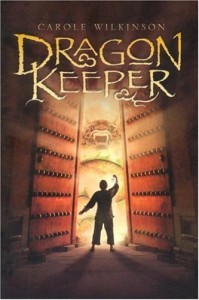
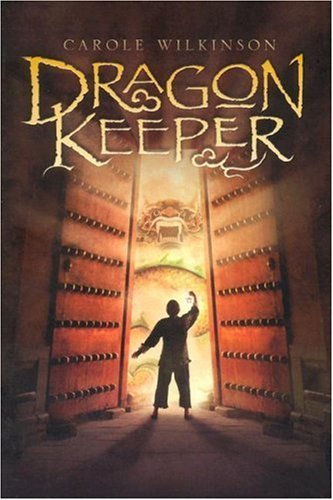


 With the exception of Farmer Boy, the original Little House books all have Laura Ingalls as the main character. Though the books themselves follow her as a child all the way to the first years of her marriage, there’s a time jump* between the third Laura book, On the Banks of Plum Creek and the fourth, By the Shores of Silver Lake. The existence of this gap means it makes sense to me to break the series there and have a look at the first three books together.
With the exception of Farmer Boy, the original Little House books all have Laura Ingalls as the main character. Though the books themselves follow her as a child all the way to the first years of her marriage, there’s a time jump* between the third Laura book, On the Banks of Plum Creek and the fourth, By the Shores of Silver Lake. The existence of this gap means it makes sense to me to break the series there and have a look at the first three books together.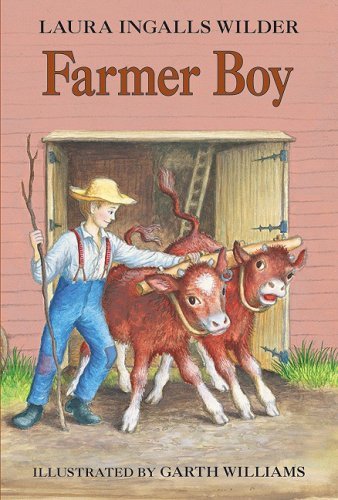
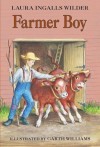 The Plot
The Plot
 The Plot
The Plot